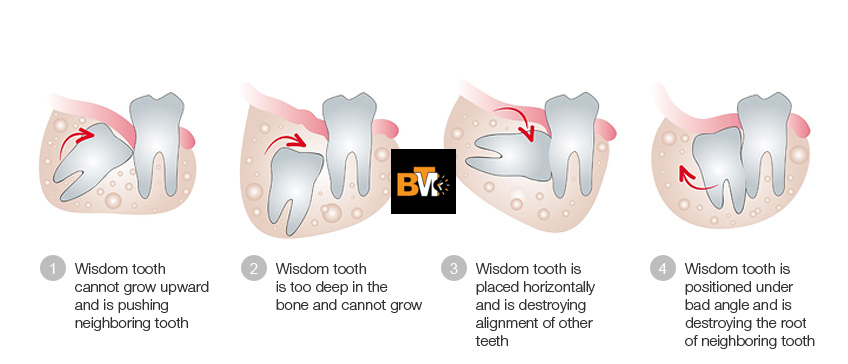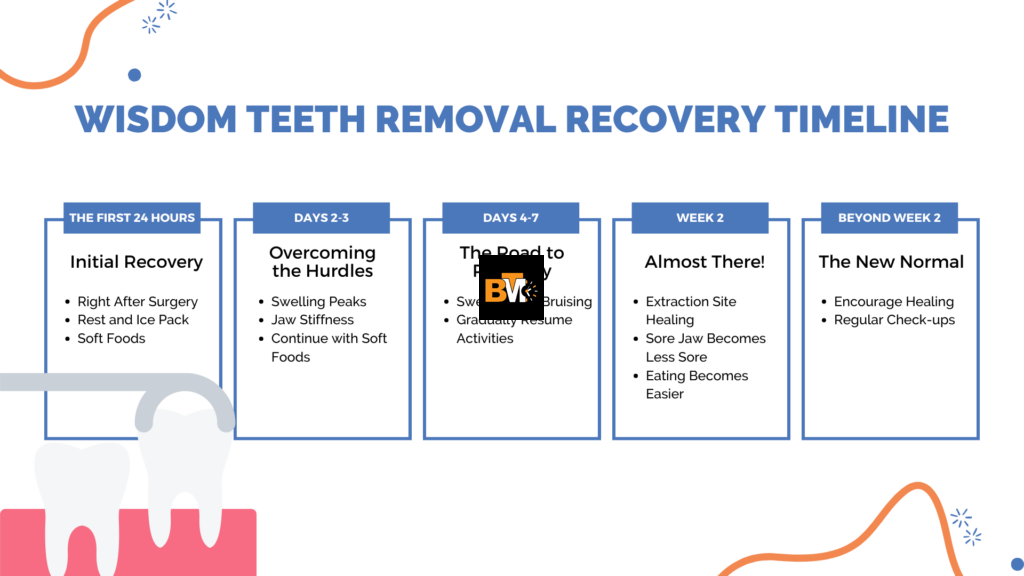Getting your wisdom teeth removed is a common dental procedure, but the recovery process can be painful. Many people experience the worst pain on the third or fourth day after extraction. This is when swelling, inflammation, and healing reach their peak, causing discomfort. If you are struggling with pain after wisdom tooth extraction, you are not alone. In this article, we will explain why the worst pain happens, how long it lasts, when to see a dentist, and how to relieve the pain at home.
Why Does the Worst Pain Happen After Wisdom Tooth Removal?
Wisdom tooth removal is a surgical procedure, and like any surgery, your body needs time to heal. The worst pain usually happens around the third or fourth day because:
- The initial numbing effect from anesthesia and pain medication wears off.
- Swelling reaches its highest point.
- The blood clot in the socket stabilizes, which can cause sensitivity.
- Your gums and jawbone are still healing from the extraction trauma.
Many people think the worst pain happens right after the surgery, but that’s not always true. The first 24 hours are often manageable because of the medications given by your dentist. However, as time passes, inflammation increases, leading to throbbing pain, jaw stiffness, and discomfort.
How Long Will the Pain Last?
The pain after wisdom tooth extraction typically lasts one to two weeks, depending on the complexity of your surgery and how well you follow aftercare instructions. Here’s a general timeline of what to expect:
- Day 1-2: Swelling and mild pain, controlled with painkillers.
- Day 3-4: Peak pain and swelling—this is the worst period for many people.
- Day 5-7: Pain starts to decrease, but soreness remains.
- Week 2: Most pain is gone, but tenderness may continue.
- Week 3-4: Full recovery for most people, but mild discomfort may linger.
If your pain does not improve after a week or suddenly worsens, you may have an infection or another complication that requires professional attention.
Signs Your Pain is Normal vs. When to See a Dentist
Some pain is expected after wisdom tooth extraction, but there are times when you may need to see a dentist.

Normal Pain After Wisdom Tooth Removal
- Mild to moderate pain that improves each day.
- Swelling that peaks on day 3 or 4 and then gradually reduces.
- Some bleeding or slight oozing for the first 24-48 hours.
- Jaw stiffness and soreness when opening your mouth.
When to Call Your Dentist
- Severe, unbearable pain that does not improve with medication.
- Pain that worsens after day 4 instead of getting better.
- Pus, fever, or a bad taste in your mouth (signs of infection).
- Excessive bleeding that doesn’t stop with gauze pressure.
- Difficulty breathing or swallowing.
If you experience any of these symptoms, call your dentist immediately.
What is Dry Socket and How to Avoid It?
One of the most painful complications after wisdom tooth extraction is dry socket. This happens when the blood clot that forms in the empty socket dislodges or dissolves too soon, exposing the nerves and bone underneath. Symptoms include:
- Intense, radiating pain in your jaw and ear.
- Bad breath or a foul taste in your mouth.
- Visible empty socket where the tooth was removed.
To prevent dry socket, follow these precautions:
- Do not use a straw or spit forcefully in the first few days.
- Avoid smoking or vaping, as it can dislodge the clot.
- Eat soft foods to minimize pressure on the area.
- Do not touch the socket with your tongue or fingers.
Best Ways to Reduce Wisdom Tooth Pain
Managing pain after wisdom tooth extraction is crucial for a comfortable recovery. Here are some of the best ways to relieve pain:
- Take prescribed painkillers on time. Don’t wait for the pain to become severe before taking medication.
- Use cold compresses for the first 24-48 hours to reduce swelling.
- Switch to warm compresses after 48 hours to ease jaw stiffness.
- Keep your head elevated while sleeping to minimize swelling.
- Rinse with salt water after 24 hours to keep the area clean.
- Avoid hard, crunchy, or spicy foods that can irritate the wound.
What Can You Eat After Wisdom Tooth Extraction?
Eating the right foods can speed up healing and reduce pain. For the first few days, stick to soft, easy-to-chew foods such as:
- Mashed potatoes
- Smoothies (without a straw!)
- Yogurt
- Applesauce
- Scrambled eggs
- Broth-based soups
Avoid hard, crunchy, sticky, or spicy foods that can irritate your gums. Gradually reintroduce solid foods after a week, depending on your comfort level.
Home Remedies for Wisdom Tooth Pain Relief
Natural remedies can help reduce pain and swelling alongside prescribed medications.

Ice Packs and Heat Therapy
- Use an ice pack on your cheek for 15-20 minutes at a time during the first two days to reduce swelling.
- After 48 hours, switch to warm compresses to relax the jaw muscles and improve blood circulation.
Salt Water Rinses
- Mix ½ teaspoon of salt in a glass of warm water.
- Gently swish the solution in your mouth and spit it out.
- Do this 2-3 times a day after the first 24 hours post-surgery to reduce bacteria and prevent infection.
Herbal and Natural Pain Relievers
- Clove oil: Apply a small amount to the extraction site for natural numbing.
- Chamomile tea: Drink warm chamomile tea to soothe inflammation.
- Honey: Has natural antibacterial properties—mix with warm water and swish gently.
Thoughts – When Will You Feel Better?
Most people feel significantly better by the end of the first week, though mild soreness may last for a couple of weeks. If you take care of your extraction site, follow your dentist’s advice, and manage pain with medication and home remedies, your recovery should go smoothly. However, if your pain worsens or doesn’t improve, consult your dentist to rule out complications.
The Bottom Line
The worst pain after wisdom tooth extraction typically peaks around day 3 or 4 but gradually improves with proper care. While some discomfort is expected, extreme pain, infection, or dry socket should not be ignored. Use cold compresses, pain medication, and soft foods to manage the pain effectively. If you experience severe symptoms, don’t hesitate to contact your dentist. With the right care, you’ll be back to feeling normal soon!







Leave a Reply